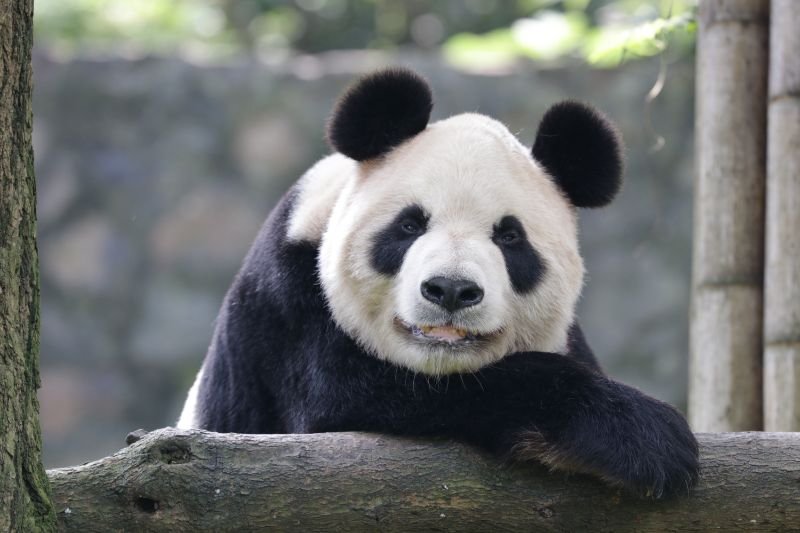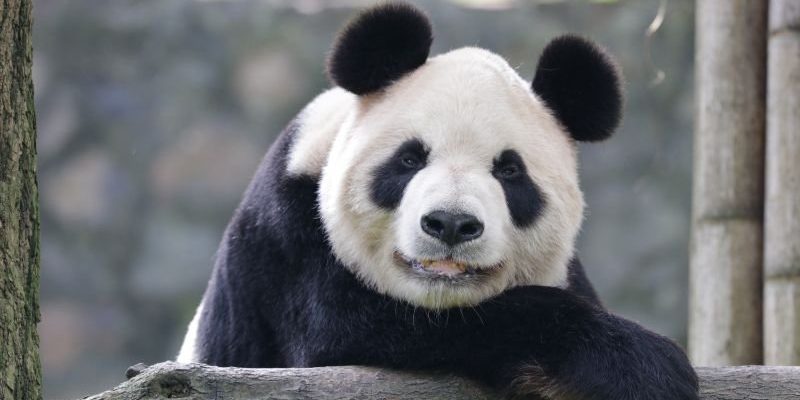
While giant pandas might seem like a cozy subject for a children’s book, there’s so much more to discover about them. They’re like living puzzles, with pieces that fit together in fascinating ways to reveal their adaptations and survival skills. Whether you’re a wildlife enthusiast or just someone looking for interesting trivia, understanding pandas can be both enlightening and enjoyable. So, grab your favorite drink and let’s dive into the top ten fascinating facts about the giant panda!
1. A Bamboo Diet
You might think of bears as meat-eaters, but giant pandas are something quite different. They are primarily herbivores, and their diet consists almost entirely of bamboo. In fact, bamboo makes up about 99% of what they eat! Here’s the thing: pandas need to consume a lot of bamboo to meet their energy needs because bamboo is low in nutrients. An adult panda can eat anywhere between 26 to 84 pounds of bamboo each day. Can you imagine munching on that much salad every day?
Interestingly, there are over 1,000 different species of bamboo, but pandas are picky eaters. They usually stick to just a few types that they prefer. You might wonder how they can survive on just one type of food. Their digestive systems are adapted to break down bamboo effectively, but they still have to eat for hours throughout the day to get enough nutrients.
2. The Unique Thumb
One of the most fascinating features of the giant panda is its “thumb,” which is not a thumb at all but an elongated wrist bone. This adaptation helps pandas grasp bamboo stalks tightly, making it much easier to eat. Honestly, if you think about it, it’s like having a built-in tool for their favorite food!
This unique “thumb” allows pandas to have a surprisingly strong grip. It’s like they have a natural fork designed specifically for their bamboo feast. When they use this adaptation to hold the bamboo, it looks almost like they’re using their hands just like we do. This helps them be incredibly efficient eaters, and with their special adaptation, they can strip leaves and peel bamboo shoots in no time.
3. Solitary Creatures
Unlike many other bear species that can be social, giant pandas are solitary animals. They generally prefer to live alone, except during mating season or when a mother is raising her cubs. This might surprise you, especially considering how playful and cuddly they seem. But here’s the thing: pandas need a lot of territory to find enough bamboo to eat.
A male panda’s territory can cover many square miles, and they mark their territory with scent to keep others away. They use scent marks, scratch marks on trees, and even vocal calls to communicate. So, while they may look cute and cuddly, they’re actually pretty independent. It’s like they’ve got their own little world, and they’re not keen on sharing it with others.
4. Cub-raising Challenges
Speaking of cubs, did you know that mother giant pandas usually give birth to twins? However, they can only care for one at a time. It’s a bit of a heartbreaking situation. When a panda mama has twins, she often chooses to raise just one, which means the other cub may not survive. It’s all about survival; raising one cub ensures that the mother can provide enough food and care.
In the wild, the mother panda will invest all her energy into raising the chosen cub. She keeps it safe and warm, nursing it for up to 18 months. What’s fascinating is that cubs are born blind and weigh about as much as a cup of tea! They grow quickly and eventually begin to wander off on their own after a couple of years. This gives them the skills needed for survival in the wild.
5. Conservation Success Stories
Giant pandas were once classified as endangered due to habitat loss and low birth rates. Thanks to concerted conservation efforts, their status has improved! In fact, pandas were reclassified to “vulnerable” in 2016, which is a huge success story in the world of wildlife preservation.
These efforts include creating reserves and breeding programs. Zoos around the globe have played a vital role in helping pandas breed successfully in captivity. For example, the Wolong National Nature Reserve in China is a significant site for panda conservation. By providing a safe environment and focusing on habitat restoration, scientists are making sure these gentle giants have a fighting chance. It’s like giving them a second home where they can thrive.
6. Unique Vocalizations
Pandas communicate with a range of vocalizations, and each sound has a specific meaning. You might think of them as quiet creatures, but they can be quite vocal! They make sounds such as bleats, honks, and barks, depending on their mood. It’s like they have their own language, used to express everything from distress to mating calls.
When a panda wants to communicate, they might use soft bleats to call for cubs or bold honks to establish territory. These vocalizations can carry over long distances in the dense forests where they live. Imagine trying to shout to a friend across a busy café; that’s kind of like what pandas do! Their vocal skills help them navigate their solitary lifestyles more effectively.
7. Cold Climate Adaptation
Giant pandas are surprisingly well-suited for colder climates. Their thick fur keeps them warm in the snowy mountains of China, where they typically reside. This fur is unique; it’s not just fluffy, but also water-resistant! You might picture them frolicking in the snow, and that’s not far from the truth.
Pandas have a special layer of fat under their skin that helps insulate them against the cold. It’s like they come with their own cozy jacket! They can often be spotted in the winter, playing in the snow or climbing trees. Their physical adaptations, combined with their playful nature, make for a charming sight.
8. Symbol of Peace and Friendship
In addition to being adorable, giant pandas are also symbols of peace and friendship. They are often used in diplomacy, especially between countries. For instance, China has sent pandas to various zoos worldwide as gifts—a gesture of goodwill.
This practice is known as “panda diplomacy.” It’s fascinating how these animals can bridge cultural divides. People around the world adore pandas, and their charm often aligns with promoting harmony and cooperation among nations. It’s heartwarming to think that a creature so innocent and playful can bring people together.
9. Slow Reproduction Rate
Giant pandas have a notoriously slow reproductive rate, which contributes to their vulnerability. A female panda is only in heat for about 2 to 3 days each year! That’s a very narrow window for mating, and if conditions aren’t right, she might not conceive at all.
This slow reproduction rate means that the population grows at a snail’s pace, making conservation efforts all the more critical. Scientists are continually researching ways to improve breeding success, both in the wild and in captivity. They’re like detectives trying to crack the code for panda parenthood!
10. Amazing Physical Traits
Lastly, let’s talk about some of the amazing physical traits of giant pandas. Beyond their adorable looks, they have strong limbs that make climbing trees a breeze. This is crucial for their survival, as it allows them to escape from predators and find food.
Their large molars and strong jaws are designed for crushing tough bamboo stalks. It’s kind of like having built-in tools that help them thrive in their habitat. Plus, they have excellent eyesight and a keen sense of smell, which aids them in finding food and mates. These traits link together to define the panda’s unique lifestyle.
In conclusion, giant pandas are not only adorable but also incredibly fascinating creatures with unique adaptations that help them survive in their environments. Whether it’s their bamboo diet, adorable cub-raising challenges, or their role as symbols of peace, pandas have captured the hearts of people around the world. By learning more about them, we gain a deeper appreciation for the wild and the vital efforts needed to preserve these amazing animals for future generations. So, the next time you see a panda, remember there’s a whole world of wonder behind those big, black eyes!

